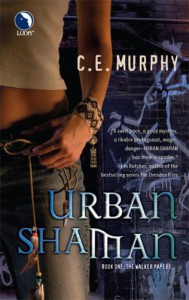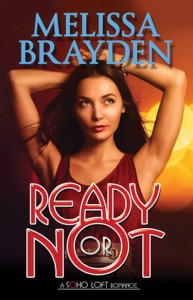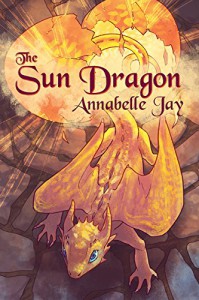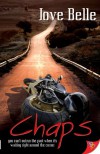
Touching Paradise
by Cleo Peitsche
Pages: 193
Date: August 27 2014
Publisher: Pouch Productions
Series: Shark Shifter Paranormal Romance (1st in series)
Review
Rating: 4.25 to 4.45 out of 5.0 stars
Read: January 29 2016
This is my fourth work read written by this author, though my first book length work (I know there are some who see a 193 page work as still being in something like the novella class or the like).
Just so I don't have to attempt to spell or use the word again - the island that Koenraad patrols, and that Monroe visits is Tureygua.
Characters
Only two characters really matter in this book, for the most part, though . . . side characters push the characters. Like, the only reason work-a-holic Monroe is even in the Carribean is because of a wedding ofa friend. And the only reason Koenraad happens to be wandering around kind of patrolling is because of his missing son, and the deal he got talked into by his son's grandfather.
I may or may not be conveying this correctly. I'll just pull back and say: there are two point of views. Monroe and Koenraad.
Monroe is a work-a-holic woman who would prefer to work than take vacations. Would rather take the money instead of vacation days. She does, though, have some friends. So when they marry, she attends their weddings. Most of the time, though, taking the least amount of time off that she can get away with - like this time, she's planning on leaving earlier than anyone else in the wedding party. She's smart, and she's attractive (through her own eyes she sees herself as being attractive, but not model attractive, to not be overly happy or overly sad that her kinda boyfriend calls her 'kinda hot'; while through Koenraad's lust filled eyes, she's . . . um . . attractive. heh). She is the last of her female friends to remain unmarried, and her current boyfriend refused, at the last minute, to go with her to the wedding. Calling her kinda hot, but boring. One of the most important character traits, though, is that she's deathly afraid of water - mostly 'deep water'.
One last point - I've no idea if Monroe is a first or last name. It might have been mentioned in the book, but if so, I overlooked it. I do know that . . . well, vaguely recall that some people, like hotel desk people, might have said something like 'Miss Monroe' at some point or another. On the other hand, everyone calls her Monroe. Her friends, people hired to do stuff for her, her ex?-boyfriend, and her lover all call her Monroe.
People connected to Monroe: Thomas - boyfriend who may or may not be ex-boyfriend. He isn't in the story physically, though texts and emails appear. Oh, and one or two phone calls. Tara - friend, fellow bridesmaid. The friend who appears to care most about Monroe, at least in the sense that she keeps turning up to ask questions and the like. Linda - the bride. Nya - another bridesmaid. I'm not sure if Linda or Nya actually say anything in this book.
Koenraad is a shark. Not in a 'loan shark' or a 'he's spirit animal is a shark' way, but in a 'he is a great white shark' way. There are shifters in fiction who are human and then transform into something else - when they are something else, they are a beast and this beast takes over and does stuff that the human has no memory of (this is one of the original versions of werewolves). There are also shifters who are animals who can transform into humans. The closest I can recall would be a kitsune, though that is more of a fox spirit than a fox, who can transform into a woman. There is a fox who transforms into a human female in one series I enjoy, though, in Sam Ryan's Dynasty Saga (still might be a spirit fox instead of a fox fox). And then there are those shifters who shift from human to animal, and retain something of their humanness, their human is in control of the beast. I mention all this because I don't know what Koenraad is. There are indications that he might actually be a shark that can transform into a human. I'm not sure if I misreading things, though.
The book opens with Koenraad being super frustrated with his inability to find his son. His . . . um. See, another thing, I got confused as to whether or not Victoria, his son's mother, is actually his wife, ex-wife, or just some woman who tricked him into imprenanting her (well, I do know that he says she tricked him into imprenanting her, I just don't know if after the fact they married or what). Got confused there.
Victoria, Koenraad's son's mother, had allowed the boy, Brady, to enter the ocean by himself. Whereupon he transformed into a shark and swam away. He was something like six or seven at the time, and would be around 8 or 9 now. He has still not been found. Victoria alternates between believing the boy to be dead, and believing him to be alive, though most of that 'believing' is to done to get under Koenraad's skin.
The missing son pulled Koenraad into agreeing to be a protector to the island - otherwise he would assign Victoria to be the protector. And Koenraad can't be near her, and can't leave because his son might still be around. So, he blocks her by taking the job himself. This being two years before the start of the main story.
People connected to Koenraad: Victoria - the mother of his son; Brady - the son; Darius - the big fish in the area, and uncle? to Brady ("He's your nephew...").
One of these days I'm going to have a more natural 'character' and 'plot' sections. mmphs.
Others: as I have mentioned, others are in the book. Most don't matter a hill of beans beyond how they pull the two main characters one direction or another. Mostly, though, in having Koenraad being pulled away from humping Monroe to go do his job. Collecting samples and stuff.
Plot
The book opens, after the prologue part, with a woman named Monroe standing outside drinking. She's wearing a bridesmaid dress. She's depressed because she's the last of her friends still single, and her boyfriend, who ducked out at the last might from attending the wedding, might be her ex-boyfriend. She gets talked into attending the scuba/snorkel girls-only event the next day. She reluctantly agrees despite being horribly afraid of water.
Monroe, that same night, skips out on the reception food and eats something from the hotel while watching an informcial. Both are important plot points.
The next day, Monroe turns up to go on that girls-only event. Wearing a bikini that has apparently shrunk. But retained it's very bright colors. She's barely covered but it's the only swmsuit she has. So she throws a cover dress on and heads to a meeting point for that girls-only on the water event. She finds someone named Sosie. Who asks if she is ready. Then proceeds to lead her to a van. Whereupon Monroe notices that the van is empty. Where's her friends? They all got food poisoning (see, I said that the fact that she skipped the wedding reception food was an important plot point). She wants to pull back, to not go on the trip, but she doesn't want to be boring any longer (like her boyfriend calls her), and decides to emprace the opportunity (or whatever that informercial said to do; see, also an important plot point).
They, as in Monroe as the only passenger/client, Sosie, and some other guy named Ralph (photographer?; captain of the boat? something), head out to sea. Monroe clutches the railing tightly, may or may not be constantly whimpering as the boat slides through the water.
The boat then breaks down. Monroe is quite happy with this development because it means she'll just rest there for, like, 45 minutes, then head back to the hotel. While clutching, tightly, the rail she looks down. Into the eyes of a really really huge great white shark. She screams.
Koenraad, that shark, darts under the boat so that now Monroe looks like a moran, because no one else sees the shark. He's kind of happy with himself until he overhears the woman begging to be brought back to her hotel (or something like that). He is now sad that he ruined her vacation. Swims back to his yacht, hops aboard, and sails over to 'rescue' Monroe. And show her a good time. In water. Monroe would much rather just go back to her hotel, but is talked into going with Koenraad (plus that informercial attacks her thought process again). Sosie, though it isn't really important, goes with them as well.
It should be noted that Koenraad, as a human, is basically wearing a very revealing speedo. And is something like a well-muscled 6 foot 5 inches tall (and heavily scarred, but I'll let readers find out why). So, Koenraad is wearing a speedo, and Monroe, once she removes her coveral dress, is wearing a shrunken bikini that barely covers. More importantly, Koenraad's senses are heightened, even in human form. He can tell that Monroe is very afraid of the water. And quite aroused by him.
There's a nice little scene wherein Koenraad helps ease Monroe into experiencing being in the water. But this was supposed to be a plot section, not a 'let's recap the whole story' section.
So, Koenraad and Monroe meet. They have fun together. Make plans to meet again later. Etc.
Romance/erotica
Part of the romance is sabtoged by Koenraad needing to work - emergency situation developing in the waters. Which reminds Monroe of someone, Thomas. Who volunteerily took on extra work just to not go to the wedding. But, for the most part . . um . . I really don't know what to say in the romance part. They don't have the traditional candle ligt dinners and the like, but they do date nice - out on the water, and in a lake, and stuff.
The graphic sex, aka erotica, was well done. I do not wish to go to far here, but feel the need to note at least one thing - sometimes books like these feel the need to have 'shifted sex' or 'beast sex'. That does not occur here. Though, I do need to also note that Koenraad, even while human, isn't . . . um, fully human. Though that has more to do with the need to bite to mark, and stuff like that. Plus the spikes on his dick. Which he is able to supress. Barely. Was that too much information? I'm not sure. I mean, it's one of those things where you are reading a kind of arousing scene and the guy is thinking about how he has to keep from having his spikes come out. It's kind of . . . distracting.
Scenery
The idea of being in the caribbean, on a boat, in the sea, on an island, then in a mansion, was well done. I don't wish to short-change this section but it's the last one I worked on and . . . I'm kind of tired. So . . um . . good work on the scenery stuff.
Overall
I rather enjoyed this short novel, and wonder what a full book by Peitsche might be like. Full as in, no cliff-hanger. There is a scale to cliff-hangers; at the lowest level, 1, a book will end with mention of another adventure - everything that came before that mention was a full story and te only reason this counts as a cliff-hanger is the simple matter that the nice happy feeling of 'conclusion' is marred by a 'continued next in [insert title here]'. Compared with something at level 5 which ends mid-scene.
'Becky turned to Samantha, opened her mouth and said: "Frankly my dear, I ---"
To be Continued'
An example of level 1 in films would involve James Bond, which routinely ended with a 'continued in' or 'will be back in' type words at the end ofthe movies. Now not all James Bond stories are complete, though, in one film. There are several occasions wherein the action in the next film picks up directly from the unresolved plot points from the prior film (like when Sean Connery-Bond is hurriedly running around beating people at the start of the next film after George Lazenby-Bond's film. Because Bond's 'girl' was killed. And Bond is pissed off). In books, an example would be the series of short stories put out by J.A. Armstrong, which almost always end with a 'continued in [insert title here]' (it's one of the reasons I somewhat assume one of the series is over now, because it didn't end with that 'continued in' stuff).
A level 1 cliff-hanger is just an indication that the characters/story continues. Tacked on to the end of a story/film that is complete in and of itself. A level 2 cliff-hanger is a complete story that has unresolved issues, but ends on natural conclusion. Sometimes those plot points/unresloved issues are never answered. Sometimes they are answered in the next book, or even in the tenth book in a series.
This book here is a level 2 cliff-hanger. It has a beginning, middle, and natural end point. But also has unresolved issues. Specifically three unresolved issues, with varying weights of importance attached to them: (1) ex(?) Boyfriend Thomas is on his way to the island and is pissed that Monroe is attempting to end the relationship; (2) the book opened with Koenraad being very frustrated with the inability to find his missing son, there is a seen involving a smallish shark in the book, I am not sure if the reader is supposed to assume that the shark is somehow related to the missing boy, regardless, the book ends with the boy still being missing; (3) there is a 'sickness' spreading through the sea, well, technically there is a point made that it seems to be staying in a certain area, but might spread, or something - that 'sickness' mystery hasn't been resolved.
That lack of resolution on three plot points is why I mentioned, at some point, that I'm curious what a 'complete' book by Peitsche might be like. Because, despite certain issues (mostly writing serial works, writing in a genre that gets looked down on, etc.) Cleo Peitsche actually does seem to know how to both write, and write interesting stories.
I rather liked this specific book here. I was supposed to read this book next month, for a challenge. But I had read the prologue a few days before (which is how I decided that I wanted to read this for a challenge next month), but when I came to the end of my latest book, I turned to this wereshark book again. I don't know, maybe I figured that, since I had a nonfiction book going, maybe I could stretch this book out until the beginning of February. Didn't happen. I opened the book. Reread the prologue, and by the time I looked up, I was at something like the 80% mark. And blinked. Looked back at the book, and the next time I looked up, book was over.
Very interesting book. I rather got into it on several levels, and at least two of the characters, the main two, apepared fully formed. I'd recommend the book. I would note that I didn't immediately pick up the second book because: it's the weekend (and I tend to read less on the weekend) and it's almost February. Maybe I'll read the second book for that challenge. Or not.
Overall I'd rate this book a good solid 4.25 to 4.45 out of 5 stars.
January 30 2016
























